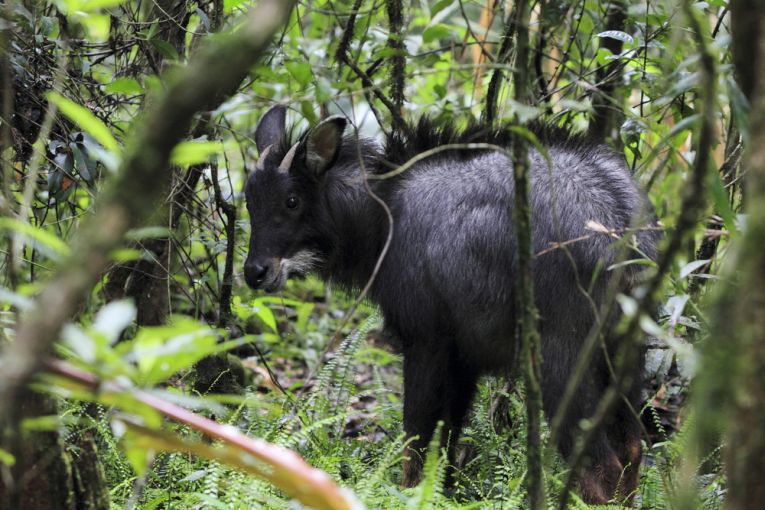We think our encyclopaedia is important for prominent animals such as the tiger but what about other Asian mammals we never hear about, including the extinct and severely threatened?
In the Americas, Australia or Africa, there are several recent re-discoveries, but many losses from all of the animal and plant phyla. The prime example is our recent report of a Vietnamese saola, Pseudoryx nghetinhensis, a cattle-relative only seen once this century.
Basically, a new species, as it was only known to the scientific world in 1937, the kouprey, Bos sauveli, is another, but giant species of forest cattle. The species is thought extinct now, but a faint chance of survival exists in war-weary Cambodia. It existed till recently in Thailand, and Laos, as the last large mammal to be discovered, but like many recent discoveries, its fate is fatally linked to its previous rarity(and in this case, human predation.)
Aurochs and gaur are the usual wild cattle you hear about, but the kouprey is so large, it also compares with the water buffalo with 1-9m (6.2feet)shoulders, weighing up to almost 1000kg (2,000lb) the long legs provide height and also speed, when necessary, while the sexes can be recognised by the very different arched horns. Like other cattle, they are graminivorous.
Herds of up to 20 existed, though the numbers had been cut down terribly by military and local hunters to an estimated low of only 50! Even in 1951, there were only an estimated 500. An old female leader was then known to be the usual head of the herd, with several males, unlike the more bull-dominated species such as gaur or banteng. Other types of herd, such as young bull groups also existed.
With no low forest left for them, protection is the only way they could possibly survive and as they have not been detectable since 1983, the end for this species has certainly been reached. There's no point in saying look for it, as many have tried. Given the incredible lack of suitable habitat at present, it would be hard to imagine a single individual hiding in a more dense situation. The saola's discoverers could use their new technique of examining vast amounts of leech blood samples, looking for the genetic "footprint" of these rarities!
The last populations in Cambodia, on the Vietnamese border, and in the far south of Vietnam near Kontum, are the only likely locations for any surviving kouprey. Gaur are found with them, along with Eld's deer, sambar, hog deer and banteng. That Cambodian and Thai savannah must have been a great sight for the locals in the past!
Some Asian bovids survive a little better than our first two examples. The serow, Capricornis sumatrensis, is a goat-antelope rather than an ox. The widespread gorals are closely related, while even the European chamois is a less close relative. The 6 species of serow have a much bigger distribution than the kouprey, and some big advantages. The danger to them is of genetic isolation, as populations cannot contact each other, just as has happened with several tiger sub-species. Serow also live high in mountains (usually above 1000m), and even use shallow caves for shelter, unlike their heavier relatives, so it's no wonder that they are seen as little as the extinct kouprey! They even have species on the Japanese islands and on Taiwan.
The Asian mammals survive only with help. African and South American forests also hide multitudes of wonderful species. New research and new discoveries await us all, but will there be any mammals left to find?










